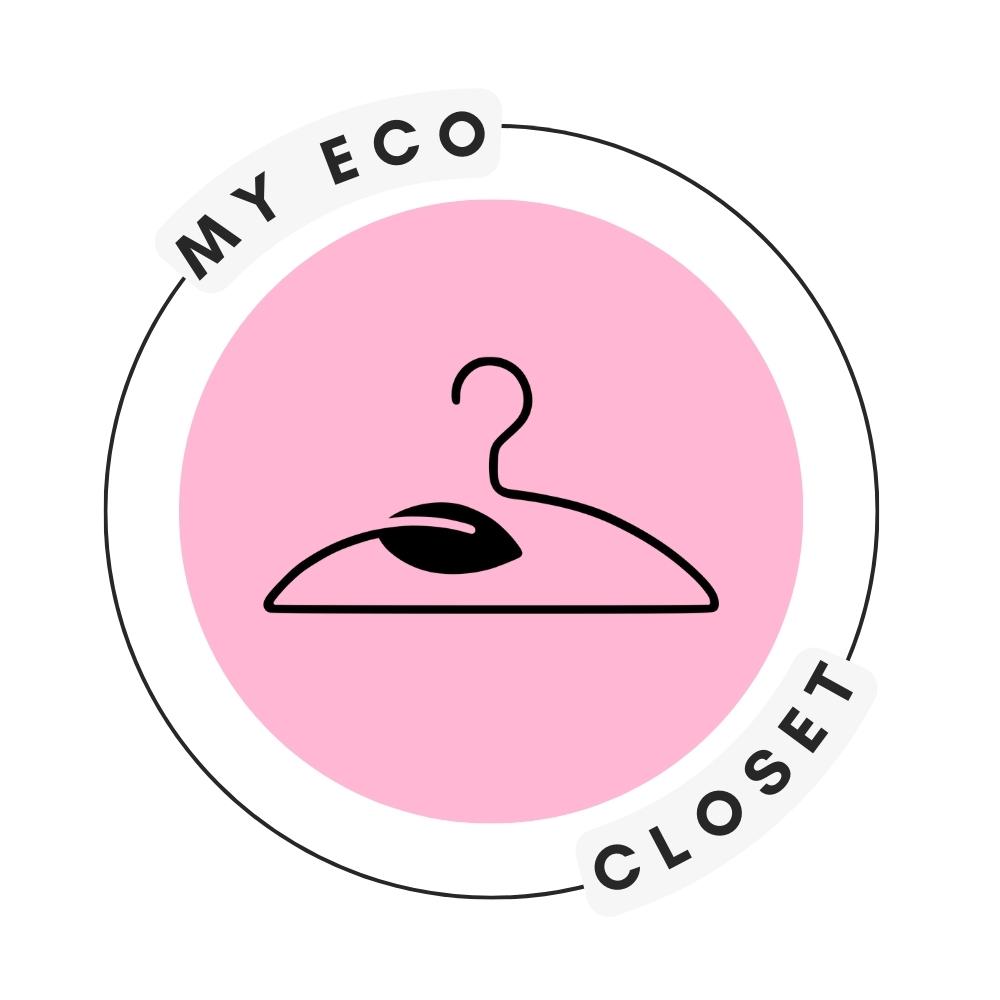In the pursuit of sustainable fashion, the question of “how many clothes is too many?” is a complex one. However, it ultimately boils down to a simple principle: if you’re not wearing a significant portion of your wardrobe, then you have an overconsumption problem. In this guide, we will help you reflect upon your wardrobe choices to embrace sustainable consumption.
How Many Clothes Is Too Many?
According to a report from Berlin’s Hot Or Cool Institute, in areas with two seasons, people should own about 74 garments. Those living in regions with four seasons will need around 85 pieces of clothing. Anything more than this is typically unnecessary, leading to overconsumption and wasted resources.
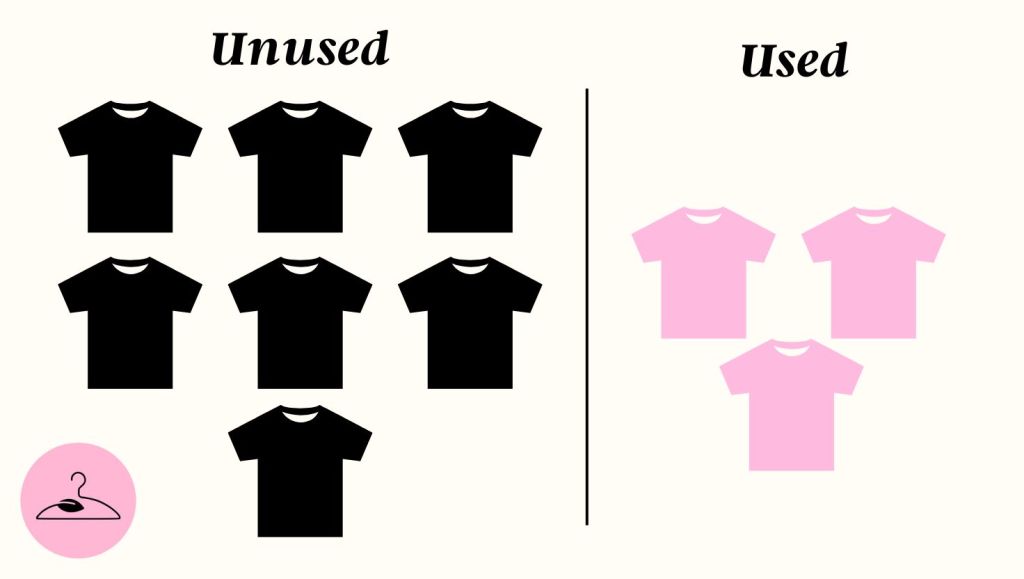
Buying Too Much Clothes
When it comes to overconsumption, the data paints a clear picture. On average, individuals have around 70% of their wardrobe items that remain unworn. This means that for every 10 items in your closet, 7 of them are likely gathering dust, never to see the light of day. This level of unused clothing is a clear sign that you’ve crossed the line into overconsumption.
The reasons behind this accumulation of unused clothes can vary. Perhaps, you fell victim to fast fashion, constantly updating your wardrobe to keep up with the latest trends. Or maybe you held onto items that don’t fit you or suit your personal style, unwilling to let go of the sunk cost.
Regardless of the cause, the end result is the same. And it probably looks like a closet bursting at the seams with clothes that are rarely, if ever, worn. This not only contributes to the staggering 92 million tonnes of textile waste generated each year but also represents a significant financial and emotional investment that goes largely unrealized.
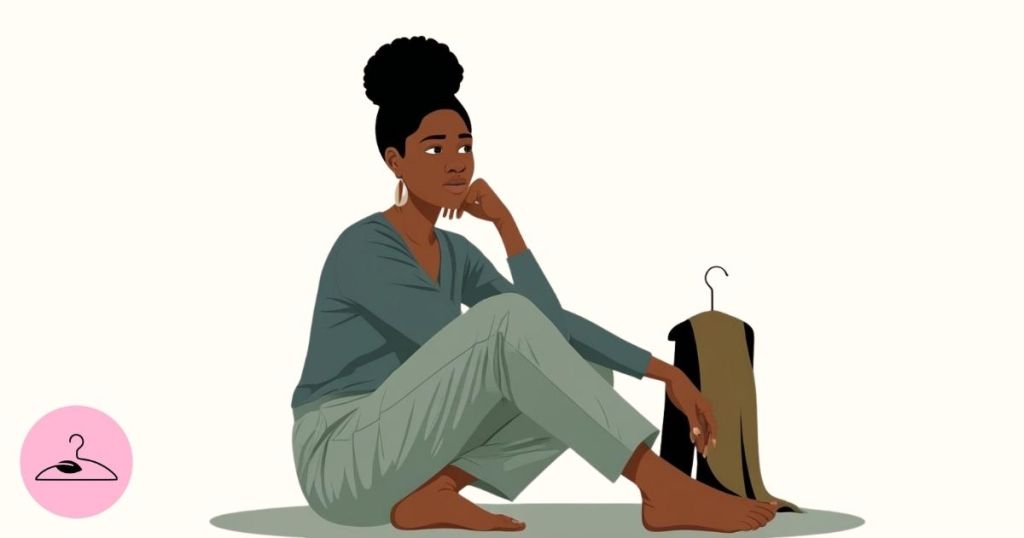
What’s the Solution?
The solution, then, is to be more intentional and mindful about the clothes we bring into our lives. Instead of succumbing to impulse purchases or chasing the latest fads, we should focus on building a wardrobe of versatile, high-quality pieces that we genuinely love and wear on a regular basis.
This doesn’t mean you have to drastically downsize your closet overnight. Rather, it’s about adopting a more thoughtful approach to shopping. It’s about regularly revisiting and culling the items you no longer wear.
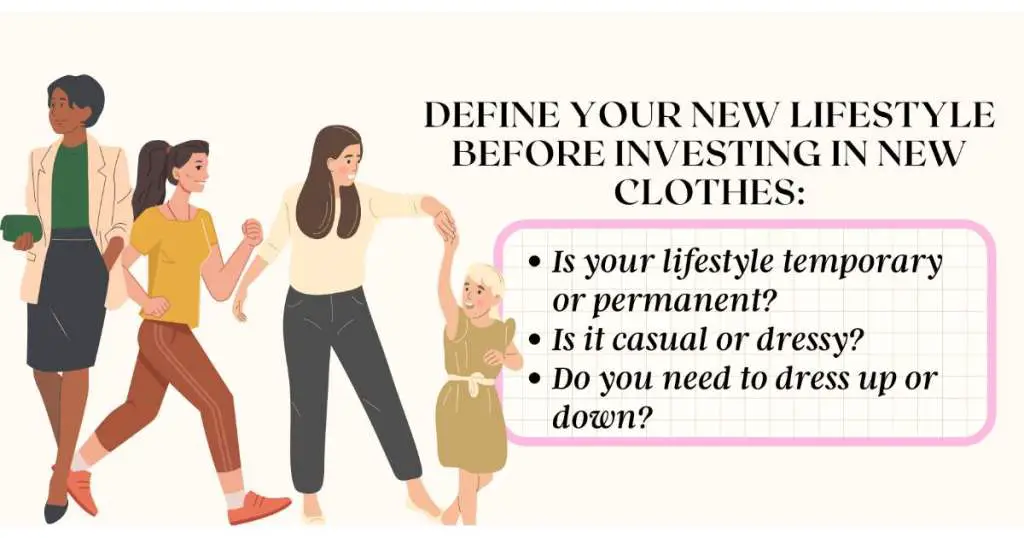
How Often to Buy New Clothes?
The key is asking yourself, “how often should I purchase new clothing?” First of all, it’s important to remember that sometimes new clothes are necessary, such as when you experience life changes — like starting a new job, picking up a new hobby, or needing replacements for worn-out items. You might also need specific clothing for certain occasions, like swimwear for a vacation or a dress for a wedding.
However, be mindful! Try to resist the urge to buy clothes just because they’re trendy or on sale, especially if you don’t truly need them. Determine your needs vs wants, and make conscious decisions.
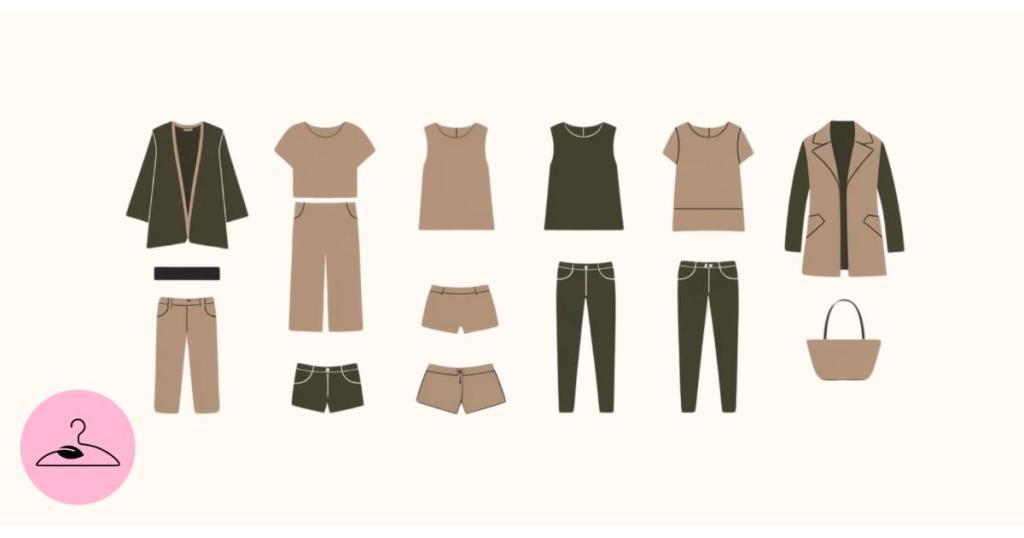
The Minimalist Capsule Wardrobe Principle
The minimalist capsule wardrobe is defined as a small, curated collection of clothing— typically around 30 to 40 items — that are versatile and can be mixed and matched to create a wide variety of outfits.
A capsule wardrobe brings many benefits, with the most important one being the elimination of decision fatigue. With fewer options to choose from, getting dressed becomes faster, easier, and less stressful. You no longer have to waste time sorting through a cluttered closet full of choices — everything you own is something you love and can wear confidently.
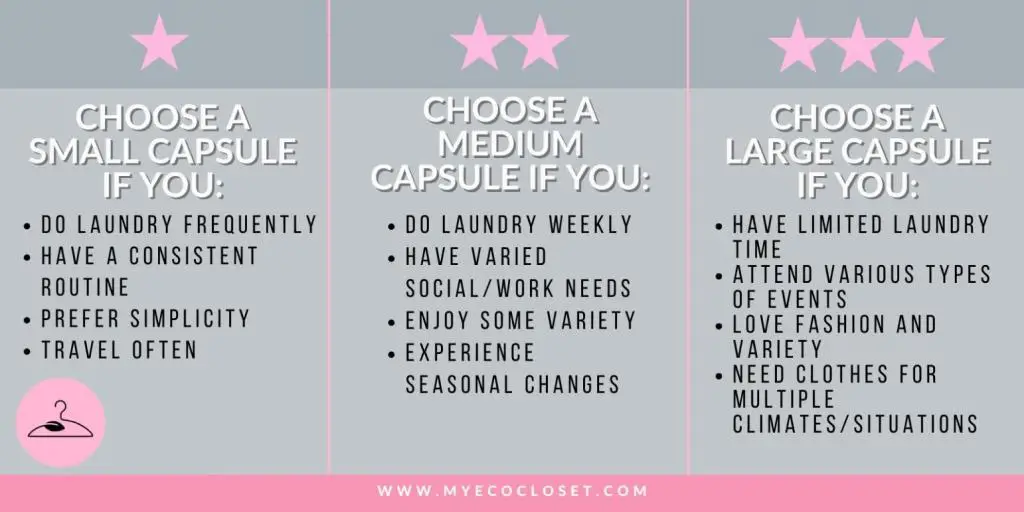
How Many Clothes to Include in a Capsule Wardrobe?
When building your capsule wardrobe, you might wonder how many clothes a minimalist needs. There are typically 3 blueprints for a capsule wardrobe, each tailored to your lifestyle and preferences. The key is to find a balance that works for you — having enough variety without the overwhelm of excess.
Here’s a breakdown of the 3 capsule sizes to help you find the right fit:
Small Capsule (10-15 pieces)
Ideal for those who prefer simplicity, have a consistent routine, and do laundry frequently. This minimalistic approach keeps your wardrobe extremely streamlined, making getting dressed quick and effortless.
Medium Capsule (30-35 pieces)
A sweet spot for those who want a bit more variety. This size works well for people with varied social and work needs, as well as those who experience seasonal changes. It offers enough options without overwhelming your closet.
Large Capsule (100 pieces)
Suitable for fashion enthusiasts, those with varied lifestyle needs, or people living in extreme climates. This larger collection allows for more variety while still maintaining the core principles of a capsule wardrobe. It’s perfect if you need more specialized clothing for different occasions or weather conditions.
PRO Tip: Choose the size that best suits your needs and lifestyle, ensuring you can mix and match for a variety of outfits while avoiding unnecessary clutter.
The Alarming Impact of Overconsumption in Fashion
In a world of fast fashion and ever-changing trends, it’s easy to get caught up in the allure of constantly updating our wardrobes. However, the reality behind this endless cycle of consumption paints a sobering picture. Each year, an astonishing 92 million tonnes of textiles are wasted, and a staggering 100 billion garments are produced globally — equating to a rubbish truck full of clothes being discarded every second.
The environmental impact of this overconsumption is truly alarming. In the United States alone, the average consumer throws away a staggering 37 kilograms (81.5 pounds) of clothing annually, contributing to around 16 million tons of textile waste each year.
Moreover, the average lifespan of clothing has decreased significantly, with garments now being worn only about 7 to 10 times before being discarded – a decline of approximately 36% over the last 15 years.
The issue extends beyond just the waste generated. In the UK, it’s estimated that there are about 7 billion items of unused clothing sitting in wardrobes, indicating a substantial overconsumption problem.
Final Thoughts
Shopping for new clothes can be fun, but it’s important to consider the environmental and financial costs. Overconsumption negatively impacts the planet, your budget, and your mental health. By tuning out fast fashion trends and buying only what you truly love, you’ll enjoy more space, money, and a wardrobe that reflects your unique style.

Frequently Asked Questions
The ideal number of clothes depends on where you live and the seasons in your area. In regions with two seasons, around 74 garments should be sufficient, while areas with four seasons may require around 85 pieces. Anything beyond that is typically excessive and contributes to overconsumption.
Overconsumption often stems from various factors, including fast fashion, the constant pressure to update wardrobes to follow trends, or the emotional attachment to items that no longer fit or serve our current style. This leads to an accumulation of unworn clothes that take up space and resources.
Studies show that on average, 70% of the clothes in our wardrobes are unworn. This means that for every 10 items in your closet, 7 of them may be sitting unused. This statistic highlights how much of our wardrobe goes to waste and contributes to environmental problems.
Overconsumption leads to an enormous amount of waste, with 92 million tonnes of textile waste generated each year. The fashion industry is also responsible for producing 100 billion garments annually, many of which end up in landfills. This cycle consumes vast resources, contributes to pollution, and accelerates climate change.
A mindful approach to shopping can help reduce overconsumption. Focus on purchasing high-quality, versatile pieces that you truly love and wear often. Practice regular closet audits, donate or sell items you no longer need, and avoid impulse buying or chasing fleeting trends.
The capsule wardrobe is a minimalist concept that focuses on curating a small, versatile collection of clothing, typically around 30 to 40 items, including tops, bottoms, dresses, outerwear, and shoes. The idea is to select pieces that can be easily mixed and matched to create a wide variety of outfits.
Consider buying second-hand clothing, which helps extend the lifespan of garments and reduces textile waste. Additionally, supporting brands that focus on sustainability and ethical production can help reduce the environmental impact of your purchases.
